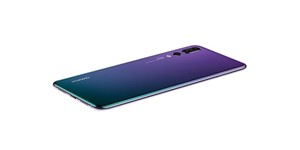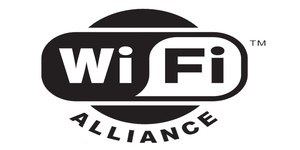
Chinese telecommunications giant Huawei has successfully tested a next-generation 5GHz Wi-Fi prototype capable of transmitting and receiving data at a rate of 10Gb/s, with a view to commercialising the technology within the next four years.
Wi-Fi, the family of radio standards formally known as 802.11, has become ubiquitous: it's almost impossible to buy a laptop, tablet, smartphone or even featurephone without integrated Wi-Fi, and the technology even finds its way onto the desktop on selected media-centric or high-end motherboards. It's not without its flaws, however, in particular the overall data throughput being shared between clients in much the same way as older hub-based wired Ethernet networks. What is a perfectly acceptable wireless network with one client connected becomes near-unusable with a hundred sharing the same connection, leading to a demand for bigger and better hardware.
Huawei's answer is boosting the overall throughput, so that each client can have a slice from a bigger pie. Its latest technology has been successfully tested as offering a sustained data transfer rate of 10.53Gb/s on the existing 5GHz radiofrequency bands - a boost of around tenfold compared to the fastest existing Wi-FI standards.
Based on the 802.11ax standard, the hardware might be lab-ready but the company is warning it's a long while before it'll be commercialised. According to Huawei's official roadmap, the first 10Gb/s products will be rolling from its factories to shop shelves some time in 2018 - assuming that the 802.11ax standard can be ratified and formalised in the meantime. When it does launch, it will do so into a market using 802.11ac-2013 - an updated form of today's 802.11ac standard due to launch in 2015 and offering a peak throughput of 7Gb/s to Huawei's proven 10Gb/s - and Quantenna's MU-MIMO 10Gb/s technology.
Wi-Fi, the family of radio standards formally known as 802.11, has become ubiquitous: it's almost impossible to buy a laptop, tablet, smartphone or even featurephone without integrated Wi-Fi, and the technology even finds its way onto the desktop on selected media-centric or high-end motherboards. It's not without its flaws, however, in particular the overall data throughput being shared between clients in much the same way as older hub-based wired Ethernet networks. What is a perfectly acceptable wireless network with one client connected becomes near-unusable with a hundred sharing the same connection, leading to a demand for bigger and better hardware.
Huawei's answer is boosting the overall throughput, so that each client can have a slice from a bigger pie. Its latest technology has been successfully tested as offering a sustained data transfer rate of 10.53Gb/s on the existing 5GHz radiofrequency bands - a boost of around tenfold compared to the fastest existing Wi-FI standards.
Based on the 802.11ax standard, the hardware might be lab-ready but the company is warning it's a long while before it'll be commercialised. According to Huawei's official roadmap, the first 10Gb/s products will be rolling from its factories to shop shelves some time in 2018 - assuming that the 802.11ax standard can be ratified and formalised in the meantime. When it does launch, it will do so into a market using 802.11ac-2013 - an updated form of today's 802.11ac standard due to launch in 2015 and offering a peak throughput of 7Gb/s to Huawei's proven 10Gb/s - and Quantenna's MU-MIMO 10Gb/s technology.

MSI MPG Velox 100R Chassis Review
October 14 2021 | 15:04








Want to comment? Please log in.